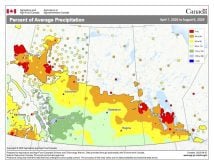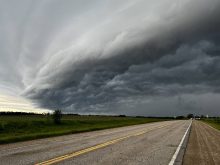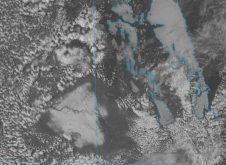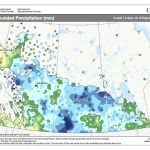After taking a little break from our look at severe summer weather I figured it was time to pick up where we left off back in early May. In our last article on severe summer weather we took a technical look at lightning and I ended that article by letting you know that we would take a look at the different types. So here we go!
Nearly all lightning you see is the classic lightning that you would draw if someone asked you to draw a picture. This lightning is known as fork lightning or plain old regular lightning. Looking more closely at this type of lightning, it can be broken down into several categories.
Read Also
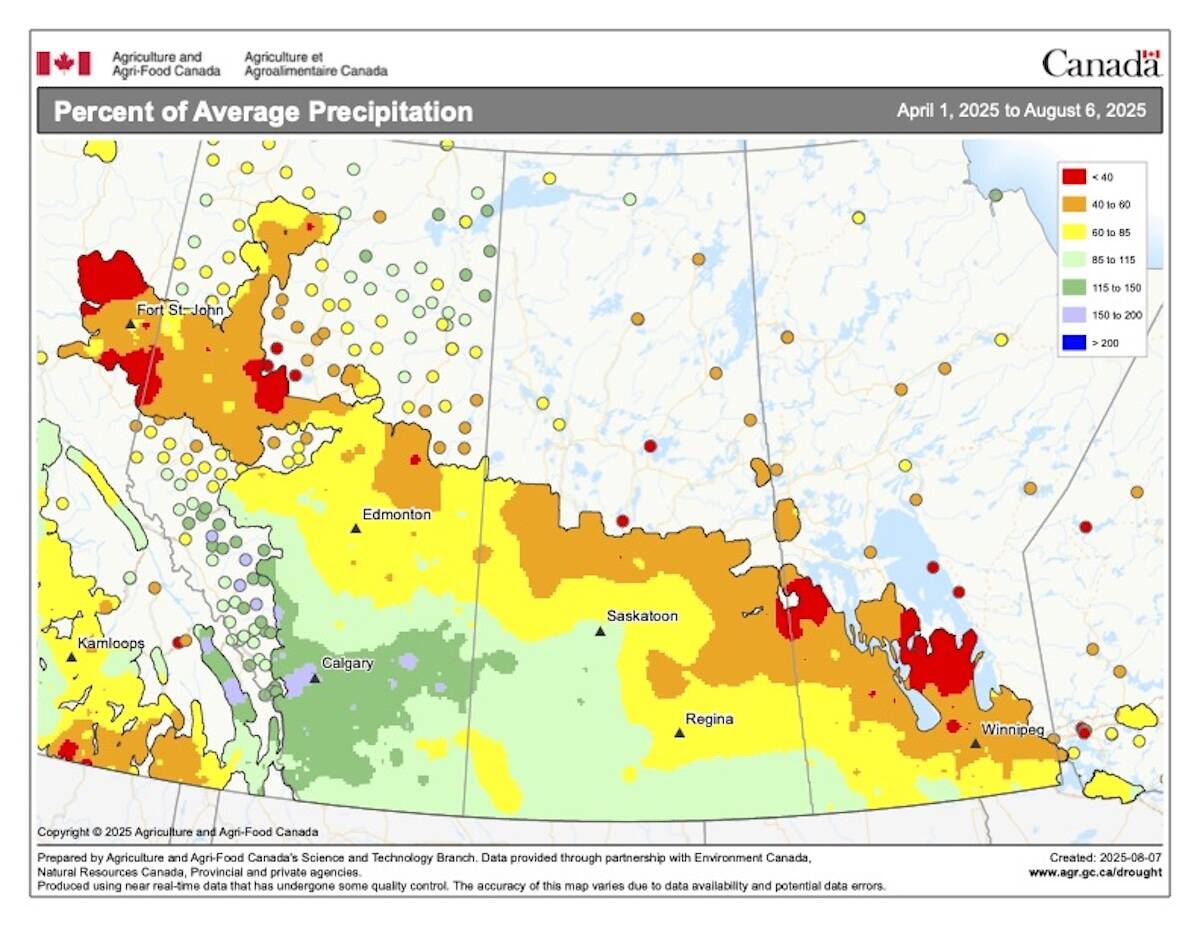
Heatwaves and upper highs
Weather expert Daniel Bezte looks at heat waves and the climate factors that lead to extended periods of high heat in the Prairies.
The first of these is cloud-to-ground lightning. This form of fork lightning has the lightning bolt originating in the cloud and moving through the air towards the ground.
The next category is cloud-to-cloud lightning. Here the fork lightning originates in one area of cloud and then travels horizontally to another area of cloud. We can usually see cloud-to-ground lightning as fork lightning. With cloud-to-cloud lightning we can sometimes see it as fork lightning, but often this form is partially blocked by the clouds. In this case we don’t see the actual fork, but instead we see the light coming off the fork lightning reflecting off of the clouds. When this occurs we call it sheet lightning.
Fork lightning and sheet lightning make up pretty much all the lightning that we see, but there are other rare forms, a couple of which have only been photographed, videoed, and identified over the last 20 or so years.
The first and probably most-heard of form of rare lightning is ball lightning. While this has been reported several times over the last several hundred years, I have yet to hear or see of any video or picture of this type of lightning.
Ball lightning is reported to be a slow-moving ball that can travel in an erratic pattern or simply horizontally. Some reports have the ball making no noise while other reports say the ball hissed as it moved along.
The really unusual aspect to this type of lightning is how long it can last, with reports indicating that it took several seconds up to tens of seconds from the time it was spotted to the time it disappeared. How it disappears in also interesting, with reports ranging from it simply disappearing with no noise, to “pops” and small explosions as it dissipates.
Out of the blue
Another rare form is an unusual form of regular old fork lightning. Ever heard the term “bolt out of the blue?” This term has its roots in a form of fork lightning that literally occurs right out a clear blue sky. No, this is not some bizarre type of lightning that occurs without clouds being around. It is a very long form of regular fork lightning.
Often, once a thunderstorm has passed, it clears up right away. The thunderstorm may have moved off far enough that you can’t really hear the thunder, but that storm can still produce lightning and some of that lightning can travel upwards of 20 km from the base of the storm. So you can be out in the sun with the storm seemingly long gone and “boom,” there can be a flash of lightning right out of the clear blue sky.
Heat lightning is another unusual form which also seems to happen without any clouds present. This type is usually seen during heat waves (hence the name). No matter what people tell you, this type of lightning is coming from a thunderstorm. The storm may not be producing rain, but it is still a thunderstorm. When people report seeing heat lightning what they are actually seeing is the reflection of lightning in a far-away thunderstorm – so far away that often you can’t even make out the clouds because they are “washed out” in the haze associated with the heat wave.
Sprites and jets
Our final two types of rare lightning are relatively new to the lightning scene and as more and more research is done we are starting to realize they are not as rare as first thought. These two types of lightning are known as sprites and jets. They occur where we never thought lightning could occur, and they dwarf all the types of lightning we have looked at so far.
Both of these types occur above thunderstorms, so to see them you have to be looking at a thunderstorm off in the distance. Sprites are a form lighting that appears at the top of a thunderstorm moving outwards. They are very large, with estimates putting their size being the equivalent of mount Everest. Jets also occur above thunderstorms and can travel upwards of 50km.
I’m pretty much out of room for this issue, if you would like to know more about these unique forms of lightning, try looking up “mega lightning” on the Internet.



